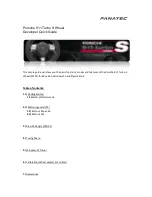
55
ing to drive some time at low gears and low engine speed. As oil warms up it is
necessary to shift to higher gears in succession.
After wading, driving through heavy rain or after washing the vehicle brak
ing surfaces become coated with moisture. This will affect braking efficiency
until disks, drums and brake linings are dried by intermittent light application
of the brakes.
Drive the vehicle where possible without sharp acceleration and decelera
tion for this will lead to the increasing tires wear and higher fuel consumption.
4WD vehicles
are equipped with twostep transfer case with equalizing
interaxle controlled slip differential and manual control. Interaxle differential
provides constant link of front and rear driving axles, which increases the ve
hicle stability. Controlled slip of the differential improves crosscountry ca
pacity of the vehicle. High gear is engaged in transfer case when hard road and
road with good adhesion driving; and underdrive – to negotiate steep upgrades
and when soft ground and offroad driving.
Differential lock should be engaged when negotiating difficult terrain or
when there is any risk of loosing wheel grip only. When engaging the differen
tial lock warning lamp lights up on the instrument cluster. On reaching the
hard road the differential lock should be
disengaged
to avoid the excessive
wear of vehicle tires and transmission as well as the increase of fuel consump
tion.
The differential lock can be engaged both from the high gear and the un
derdrive of the transfer case.
Gear shifting, differential engagement and disengagement in the transfer
case should be done when the vehicle is stationary or moving at the speed of
up to 5 km/h.
Difficult engagement and disengagement of differential lock may be caused
by insufficient runningin of the new parts.
In case of trouble in the differential lock engagement it is necessary to coast
the vehicle in chosen direction acting repeatedly, if required, on differential
lock control lever of the transfer case till its full engagement.
In case of trouble in differential lock disengagement it should be done un
der following conditions:
1. If the vehicle has been moving
forward
it is necessary
to coast the vehi
cle
backwards
pushing the clutch pedal and, if required, acting repeatedly on
differential lock control lever till full disengagement of the differential lock;
2. If the vehicle has been moving
backwards
it is necessary to coast it
for
ward
pushing the clutch pedal and, if required, acting repeatedly on differen
tial lock control lever till full disengagement of the differential lock.
















































